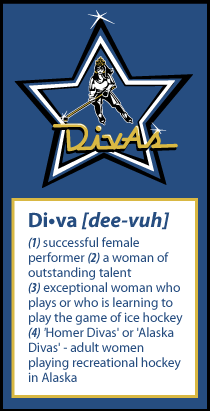What we talk about before every game: Three ABCs: support the puck, protect the puck, and play on the defensive side of the puck.
Support the Puck.
Always give the puck carrier support by being a passing option in all areas of the ice.
The player without the puck has to work hard to provide the puck carrier with a passing option. Quick support (short passes) is for situations where your teammate needs an immediate option. Anticipate situations where your teammate needs quick support (a player needs to pass it before it gets taken away).
Tip: Most of the game of hockey is played without the puck. What you do as a player when you don’t have the puck is very important. In this case good hockey players work hard to give the puck carrier passing options.
Give verbal support when a player has no eyes (face to the glass in a battle on the wall).
When the puck is loose (no one has clear possession)or when your teammate’s head is down you can give some verbal support to get your teammate to poke, slide, indirect, chip or pass to an area where you can get it.
The most common problem I see in beginner hockey: a defenseman gets the puck and the forwards all take off towards the other goal. Left wings down the left lane, right wings down the right side. Centers down the middle. A beginner defenseman can not make a 60 foot pass. Players take their eyes off the puck carrier so they aren’t ready when the pass comes. A beginner player (or anyone for that matter) can’t catch a pass from behind when looking over her shoulder. (These passes usually go for icing.)
Don’t skate down the lane if you are covered or in a shadow of another player. Come back to the puck, dip down and take back some space, or take an angle to support. Have your stick on the ice and present yourself to the puck carrier – open up toward the puck, don’t turn your back to or skate away from it. Think about giving the puck carrier a 15 foot passing option rather than a 50 foot option. Move to open ice – adjust your angle — keep your stick open and on the ice. Stay out of shadows of the opposition (get open). Move purposely to open ice. Jump into passing lanes. Get your head turned towards the puck when moving.
Work on: Mohawk turns and tight pivots always keeping your body open to the puck carrier.
The second most common problem I see in beginner hockey: players all stand still (which could be stationary support but not when everyone else on the team is doing it) and stare at the puck carrier. They are either covered or soon will be.
To give support in the neutral zone or offensive zone move to open ice on an angle where you can catch a pass. Try to anticipate where you might go before the puck carrier needs to pass.
In the offensive zone use a triangle rotation – give and goes—and give the puck carrier two passing options.
Other kinds of support:
Secret to Hockey: Only one player at a time can control the puck, but everyone else can support the puck carrier.
Tip: Never take your eyes off the puck or turn away from it when your teammate is getting pressured and needs to pass.
Isn’t it interesting that the first concept in hockey is support? Support your partner, support your family, support your friends, support your cause. etc. That’s what it’s all about.
In practice I often do a warm up drill that is simple but emphasizes support. I call it support passing warmup. All players partner up and support pass all over the ice. (Remember the Tammy Wynett support song: Stand by your Man?”) Backwards skating, forward, heel to heel, pivots, cutbacks. – ten, fifteen foot passes. Read off your partner. Don’t pass it unless she is ready. Always be ready. Get your head turned when coming out of a turn, get your stick oriented to catch a pass. Always have your stick on the ice. Be creative. Weave, cut, open up, exchange. Practice nice crisp passes while moving. Keep your head up because there are 20 other players doing the same thing in all directions, all over the ice. Then we do it where you cannot pass it to your partner unless she calls for the puck. This reinforces the importance of communication and support.
Here are some videos to help you learn these concepts:


